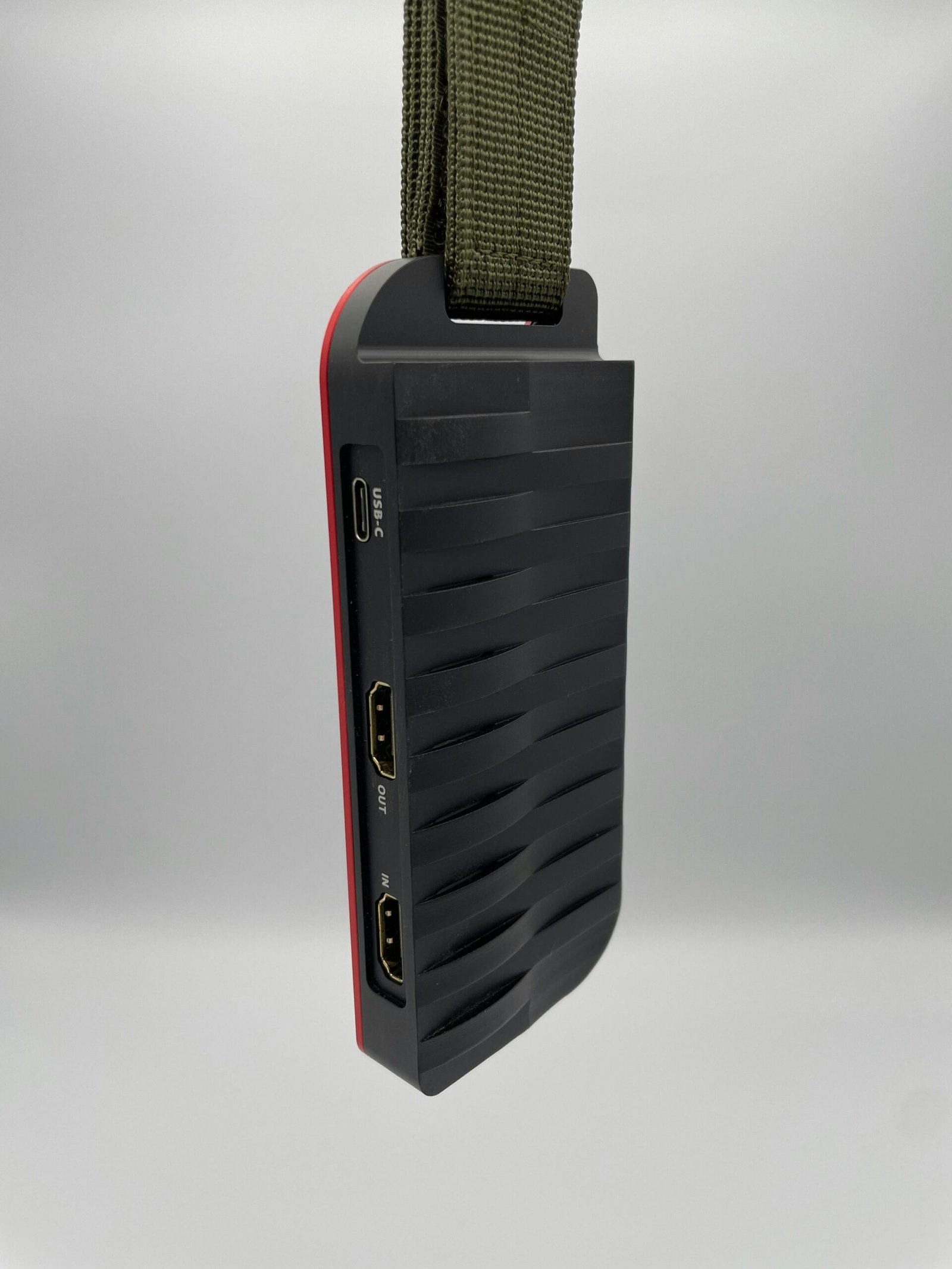Is LED or LCD Better for Outside Viewing?
Introduction to Display Technologies
Over the past decades, display technologies have undergone significant transformation, shaping the way we view digital content. Among the most prominent advancements are LED (Light Emitting Diode) and LCD (Liquid Crystal Display). These technologies have found widespread application in various devices, from smartphones and televisions to computer monitors and outdoor billboards. Understanding the fundamental differences between LED and LCD technologies is crucial to grasping their suitability for different environments, including outdoor viewing.
LED technology functions by emitting light through a series of diodes, which can be individually controlled to produce vibrant and highly contrastive images. Initially introduced in the mid-20th century, LED displays have evolved to become more energy-efficient and capable of delivering high-definition visuals. A notable application of this technology includes outdoor digital signage, where brightness and visibility are paramount.
On the other hand, LCD technology utilizes liquid crystals sandwiched between two layers of glass or plastic. These crystals do not emit light by themselves but instead modulate light from an external source, usually backlighting. LCD displays became prevalent in the late 1980s and quickly gained popularity for their energy efficiency and ability to display sharp, clear images. Commonly found in devices such as laptops, televisions, and portable gaming systems, LCDs have been a cornerstone of modern visual technology.
As both LED and LCD technologies continue to advance, their applications diversify, meeting various user needs. The primary factors differentiating these display technologies include brightness, contrast, and energy consumption—attributes that significantly affect their performance in outdoor settings. In the sections that follow, a detailed comparison will shed light on which technology, LED or LCD, is better suited for outside viewing requirements.
Key Differences Between LED and LCD
When considering the choice between LED and LCD screens for outdoor viewing, it is essential to understand the foundational differences between these two technologies. Both terms are often used interchangeably, but they inherently refer to different mechanisms of display. An LCD, or Liquid Crystal Display, operates by using liquid crystal molecules sandwiched between two layers of glass or plastic. When electrical current passes through these crystals, they align to allow or block light to generate an image. In contrast, LED, or Light Emitting Diode, technology uses these same liquid crystal displays but with a significant difference in the backlighting. Unlike standard LCDs that typically use fluorescent tubes, LED screens employ an array of tiny LEDs for backlighting. This form of illumination provides several benefits including better control of picture contrast, and deeper black levels.
Structurally, LED screens can be sub-categorized into edge-lit and direct-lit types. Edge-lit LEDs position the diodes around the screen edges, which helps maintain thin screen profiles. Direct-lit LEDs, however, have LEDs distributed evenly across the entire screen. This leads to superior brightness and uniformity, making direct-lit LED screens particularly advantageous for outdoor use where light dispersion matters significantly. LCDs, while efficient and widespread, may not offer the same contrast and brightness levels, especially under direct sunlight.
In terms of functionality and use cases, LCDs have traditionally been the go-to for computer monitors and indoor televisions due to their cost-effectiveness and sufficient quality for indoor lighting conditions. LED screens, reflecting their evolution and advanced technology, dominate areas requiring superior visual performance. They are prevalent in outdoor digital signage, commercial displays, and high-end consumer electronics where visibility and image clarity, irrespective of environmental lighting, are paramount.
Understanding the distinct functionalities and benefits of LEDs and LCDs within the context of their application sets the stage to deeply compare how each performs under diverse outdoor lighting conditions. Both have their strengths, but their efficacy in specific scenarios hinges on these fundamental differences.
“`html
Brightness and Visibility in Outdoor Settings
When evaluating the suitability of LED and LCD screens for outdoor use, brightness and overall visibility are critical factors to consider. Outdoor environments pose unique challenges such as direct sunlight and glare, which can drastically reduce the clarity and usability of a display. Hence, the intrinsic brightness levels of these technologies and their ability to mitigate these issues are paramount.
LED displays typically offer higher brightness levels compared to their LCD counterparts. On average, standard LED screens achieve brightness levels ranging from 400 to 1000 nits, while LCD screens commonly deliver between 200 to 400 nits. This significant disparity makes LEDs more adept at maintaining visibility under harsh outdoor conditions. The elevated brightness levels of LEDs help to counteract the impact of direct sunlight, ensuring that the screen content remains perceptible even in glaring sunlight.
Moreover, the technology behind LED displays allows for localized dimming, which further enhances contrast ratios and improves readability in various lighting environments. With their capability to provide higher brightness and contrast, LED screens often emerge as the preferable option for outdoor settings.
To address the challenges posed by outdoor visibility, manufacturers incorporate several enhancements in both LED and LCD displays. For instance, anti-glare coatings are applied to screens to reduce reflections from sunlight or ambient lighting. Additionally, optical bonding techniques are employed to minimize air gaps between layers of the screen, diminishing internal reflections and enhancing image clarity.
While LCD screens are traditionally less bright, advancements in technology have seen the introduction of High Brightness LCD panels, which can reach up to 2000 nits. Such developments narrow the performance gap between LEDs and LCDs concerning outdoor visibility. However, high-brightness LCDs tend to consume more power, which might be a consideration in applications where energy efficiency is essential.
In conclusion, when prioritizing brightness and visibility for outdoor use, LED displays generally outperform LCDs due to their higher inherent brightness levels and better adaptability to varying lighting conditions. Nonetheless, advancements in LCD technology continue to make them a viable option, especially when complemented with appropriate visibility-enhancing technologies.
“`
Energy Efficiency and Battery Life
When considering the use of portable devices in outdoor environments, the energy efficiency of the display technology is a significant factor, directly impacting battery life. LED and LCD screens each have distinct characteristics in terms of energy consumption.
LED screens are generally recognized for their energy efficiency, primarily due to the use of light-emitting diodes to illuminate the display. These diodes consume less power compared to the traditional fluorescent backlighting used in many LCD screens. As a result, devices equipped with LED displays tend to have longer battery lives, a crucial advantage for users who rely on their devices outdoors where access to charging facilities may be limited.
On the other hand, LCD screens, while typically more power-hungry, have seen advancements in technology that improve their efficiency. Modern LCD panels often incorporate features such as adjustable backlighting and energy-saving modes, which help to mitigate their higher power consumption. However, they still generally fall behind LED displays in terms of overall energy efficiency.
Several case studies highlight the real-world implications of these differences. For instance, modern smartphones with LED displays exhibit around 20% to 30% improvement in battery life over comparable models with LCD screens. This difference can translate into several additional hours of usage, which is particularly beneficial for outdoor users engaged in activities such as hiking or camping where power sources are scarce.
Consumers considering portable devices for outdoor use must weigh these factors carefully. While the initial cost and visual performance of both technologies are vital, the long-term convenience and functionality provided by superior energy efficiency and extended battery life often make LED displays a preferred choice for outdoor applications.
Durability and Weather Resistance
When considering outdoor usage, the durability and weather resistance of screens are critical factors that significantly impact their functionality. LED and LCD screens, while both popular choices, have distinct characteristics in how they handle environmental stressors such as temperature extremes, moisture, dust, and physical impact.
LED screens are generally more robust due to their construction and the materials used. They can withstand wider temperature variations, ranging from extreme cold to intense heat, making them suitable for diverse climates. Additionally, LED technologies often come with enhanced weatherproofing features, such as sealed enclosures and conformal coatings that protect against moisture and dust ingress. These measures ensure that LED screens maintain optimal performance and longevity even in harsh outdoor conditions. However, it’s important to note that while LEDs are more resistant to environmental factors, they may still require occasional maintenance checks to ensure their protective measures remain intact.
On the other hand, LCD screens are more traditionally used in controlled environments and are generally less resilient in the face of outdoor challenges. Issues such as condensation and thermal expansion can affect LCD panels, potentially leading to reduced visibility and reliability. However, modern advancements in LCD technology have introduced features like rugged enclosures and anti-reflective coatings that enhance their outdoor performance. For instance, an LCD screen encased in a weather-resistant enclosure can be effectively shielded from rain, dust, and physical impacts. Moreover, additional cooling or heating elements can be integrated into the design to maintain stable operating temperatures, thus extending the screen’s usability in varying weather conditions.
In conclusion, while both LED and LCD screens can be adapted for outdoor use, LED screens tend to be more naturally equipped for durability and weather resistance. LCD screens, though requiring more protective measures, can also perform well under the right conditions. Understanding the specific environmental challenges of the intended outdoor location is crucial in selecting the appropriate screen technology and implementing the necessary enhancements for durability and weather resilience.
Color Accuracy and Contrast in Natural Light
When evaluating the performance of LED and LCD screens under natural light, understanding their color accuracy and contrast capabilities is paramount. Natural light often introduces variances that challenge the screens’ ability to render accurate colors and maintain contrast. The impact on these aspects primarily pivots on the inherent technologies and additional enhancements integrated by manufacturers.
LED screens, utilizing light-emitting diodes for illumination, generally offer superior brightness levels. This characteristic is advantageous outdoors where increased ambient light can obscure visibility. However, higher brightness does not necessarily equate to accurate color reproduction. Despite this, advancements in LED technology, such as Quantum Dot enhancements, have significantly improved color fidelity and contrast even under direct sunlight.
On the other hand, LCD screens, which rely on liquid crystals modulated by backlighting, often struggle more with outdoor conditions. Their performance in natural light usually depends on the quality of their backlight technology and any anti-glare coatings that are deployed. High-end LCD displays incorporate In-Plane Switching (IPS) technology, which improves viewing angles and color accuracy, but these advantages can still be somewhat diminished in overly bright environments.
Proprietary technologies and coatings play a crucial role in augmenting both LED and LCD displays for outdoor use. Anti-reflective coatings, for example, help mitigate the effects of glare, improving visibility and color accuracy. Additionally, manufacturers employ various methods such as High Dynamic Range (HDR) technologies to enhance contrast ratios, ensuring deeper blacks and more vivid colors even under challenging lighting conditions.
In essence, while both LED and LCD screens face challenges in maintaining color accuracy and contrast outside, LED displays generally have an edge due to their higher brightness levels and advancements like Quantum Dot technology. Nonetheless, the choice between the two will often depend on specific requirements and available enhancements designed to improve their outdoor performance.
Cost Considerations
When evaluating the cost considerations between LED and LCD screens for outdoor viewing, it is essential to weigh both the initial purchase price and long-term maintenance expenses. Typically, LED screens tend to have a higher initial cost compared to traditional LCD screens. This is largely due to the advanced technology inherent in LEDs, which offers superior brightness, better color accuracy, and enhanced durability—all desirable traits for outdoor environments.
However, while the upfront cost of LED screens is generally higher, the long-term savings can be substantial. LED screens are more energy-efficient, leading to reduced electricity bills over time, especially in situations where the screen is in operation for extended periods. Furthermore, LEDs boast a longer lifespan and less frequent need for repairs, lowering the overall maintenance costs. This makes them an economically viable option for businesses aiming to minimize recurrent expenditures.
On the other hand, LCD screens, though initially less costly, may incur higher long-term expenses. The backlighting used in LCDs is generally less energy efficient compared to LEDs, leading to increased power consumption. Additionally, LCDs might require more frequent maintenance and replacement of components, particularly when exposed to extreme outdoor conditions. This can accumulate into significant, ongoing costs that should be factored into the decision-making process.
Outdoor conditions play a crucial role in determining the cost-effectiveness of each choice. In environments with high ambient light, the superior brightness and clarity of LED screens can justify the initial investment. Conversely, in more controlled or shaded outdoor settings, LCD screens might suffice and present a less expensive option.
Ultimately, the choice between LED and LCD for outdoor use involves a careful cost-benefit analysis. Consumers must consider not just the purchase price but also the operational and maintenance costs over the device’s lifespan. By doing so, they can identify the most financially sensible option tailored to their specific outdoor viewing needs.
“`html
Conclusion and Recommendations
In exploring whether LED or LCD is better suited for outside viewing, it’s evident that both technologies have their distinct advantages and drawbacks. Understanding these key attributes is essential in making an informed decision tailored to specific outdoor usage needs.
LED screens, known for their high brightness and robust color contrast, excel in direct sunlight, making them an optimal choice for environments where visibility is a primary concern. Their energy efficiency and ability to deliver vivid imagery without significant power consumption add to their appeal for mobile devices and portable displays. Conversely, LED screens may sometimes struggle with off-angle visibility, potentially affecting the viewing experience from different perspectives.
On the other hand, LCD screens offer a broad range of display sizes and are generally more affordable. They provide consistent image quality across various viewing angles, which is beneficial in settings where multiple viewers are present. However, their performance in direct sunlight may not match the brightness levels achieved by LED screens, unless enhanced with advanced backlighting technologies. This makes them more suitable for semi-shaded or indirect light conditions.
For scenarios where screen brightness and color accuracy under direct sunlight are critical, such as outdoor events, digital billboards, or field work, an LED display is likely the superior choice. For general outdoor leisure activities like sitting on a patio or moderate outdoor use where cost and viewing angles are more pressing considerations, an LCD might be more practical.
Ultimately, the decision between an LED and LCD screen for outdoor viewing should be guided by the specific requirements of the intended use. By weighing the environments you typically encounter and the critical aspects of display performance you prioritize, you can select the technology that best meets your needs, ensuring satisfactory outdoor viewing experiences.
“`







